Meet the Thirteen, DC's new retconned Golden Age characters
In the finale of Flashpoint Beyond, the Time Masters discovered that 13 characters who were held captive outside of the timestream have been reintegrated into DC history, effectively retroactively inserting characters who never existed in the real world Golden Age of the '30s and '40s into the Golden Age of DC continuity.
Now, the New Golden Age #1 fully introduces these retconned Golden Age characters, giving them retro-style profiles in the style of Who's Who, the popular DC encyclopedia comic of the '80s.
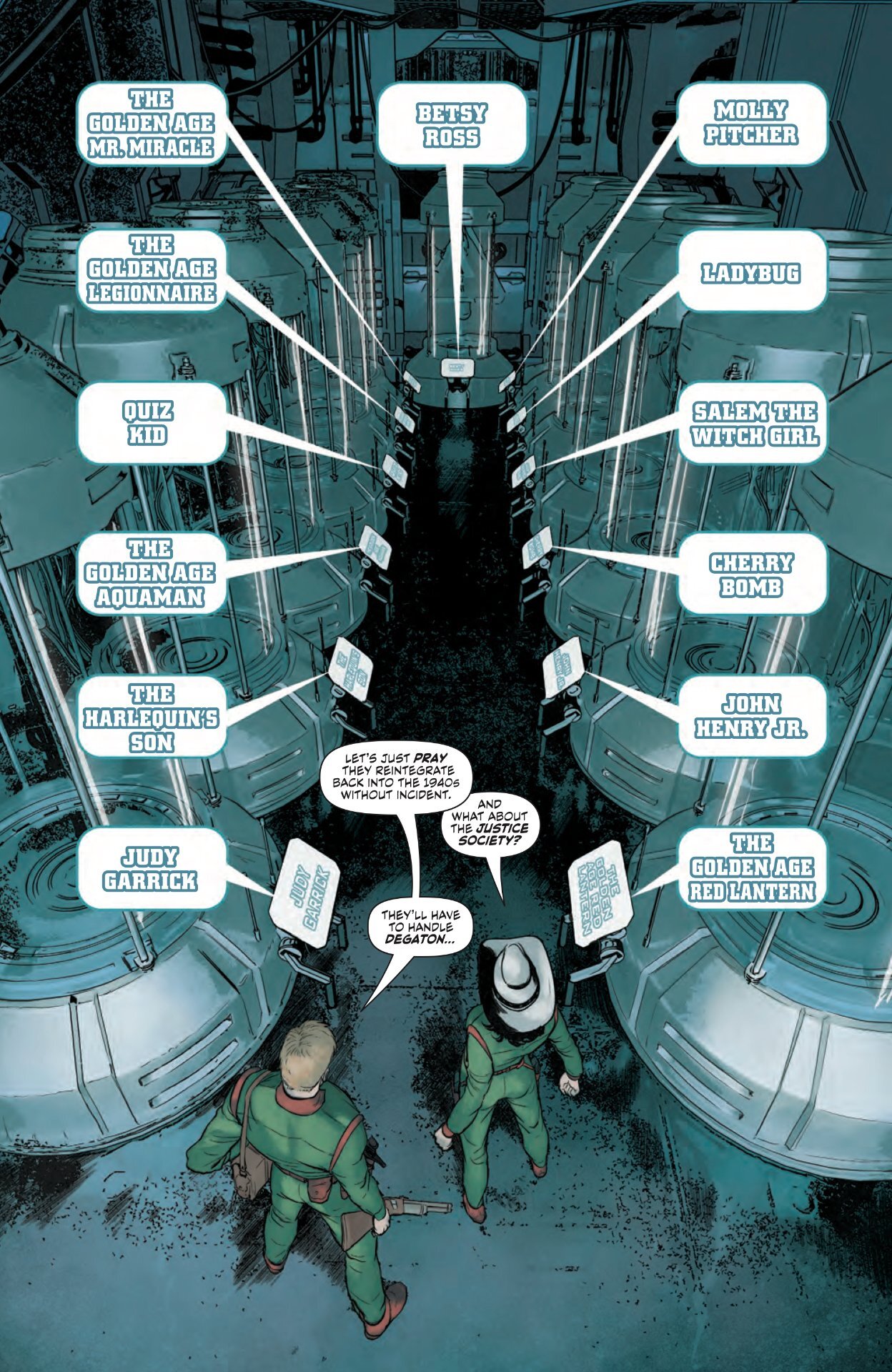
"In a lot of these events, the characters come back. There are a lot of characters that come back," Flashpoint Beyond co-writer Geoff Johns tells Newsarama of the decision to retcon characters into the Golden Age.
"We wanted to really introduce new characters and not just new characters moving forward, but characters that existed in the Golden Age to flesh out the Golden Age," he continues. "So the new Golden Age doesn't just mean ‘the new Golden Age moving ahead,’ it's talking about the new JSA book and what that legacy looks like and where those characters are going."
"But it also goes back with these characters that were from the 1940s, that were pulled from history and are going back into it. So now, we can tell stories in the past that you won't know. The past isn't exactly what you've seen. You've not seen every tale."
Though we had initial guesses about the identities of some of the characters based solely on their names, we now know exactly who these characters are, right down to their fictitious comic issues in which they made their retconned first appearances.
And while some of our guesses were dead on, some of the new characters being retconned into DC's Golden Age and the connections they share to existing continuity might surprise you quite a bit.
Golden Age Mister Miracle
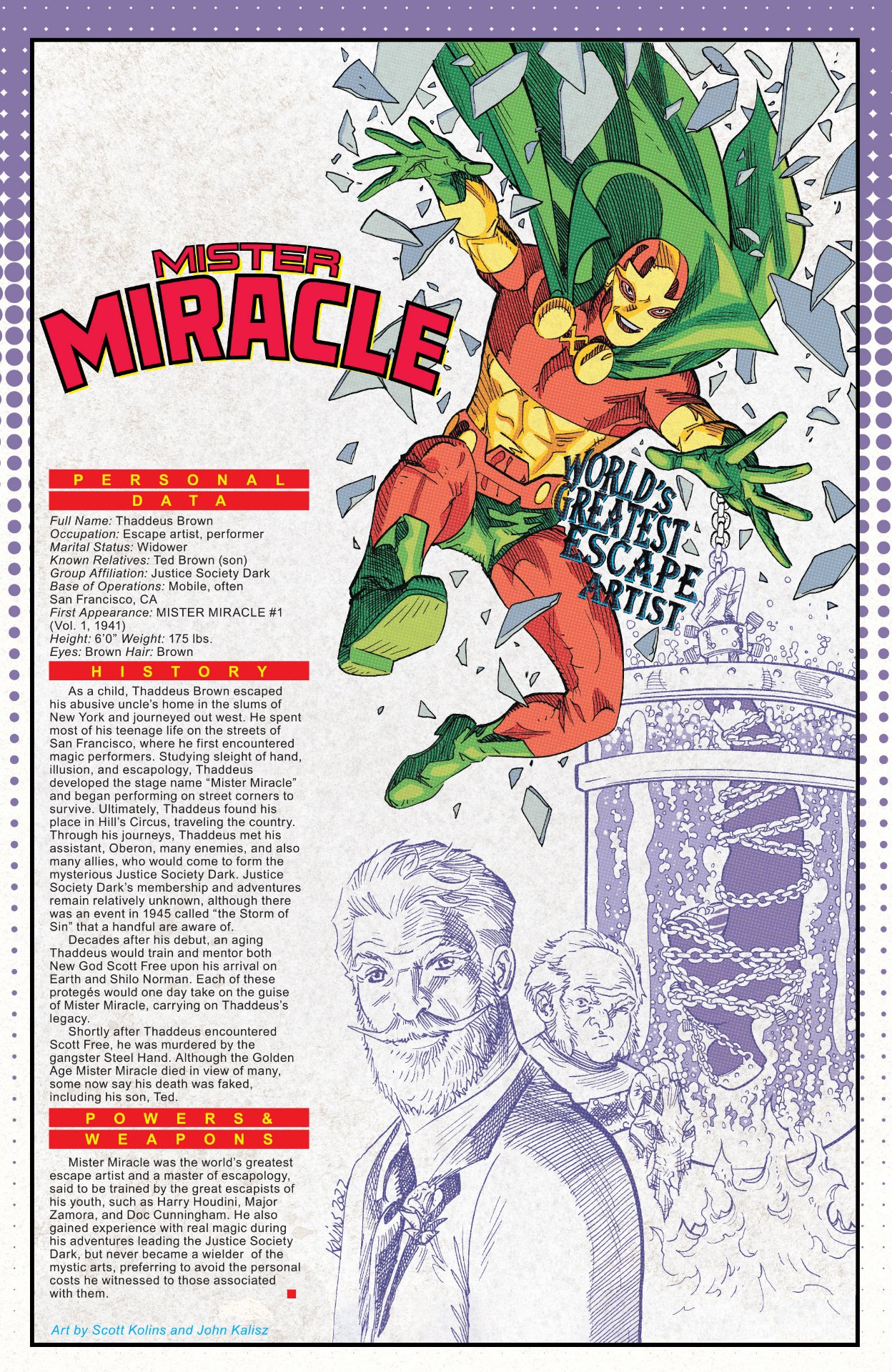
What we thought: There's no actual Golden Age Mister Miracle in real-world comics from the '40s, but DC fans will immediately know the modern-day character of Mister Miracle, introduced by Jack Kirby in the '70s.
Mister Miracle, AKA Scott Free, is the original Mister Miracle, and a member of the New Gods. So is this a version of him from the past, or another hero to use the name Mister Miracle?
Who he is: Interestingly enough, the Golden Age Mister Miracle actually is a pre-existing character from the backstory of the original Mister Miracle. Secretly Thaddeus Brown, the Golden Age Mister Miracle is the escape artist who trained Scott Free in showmanship and who passed on his name and costume to the New God when he came to Earth after escaping Apokolips.
But what's new for Thaddeus Brown is an apparent career as a Golden Age superhero that's been retconned into the DC Universe. Interestingly enough, the retro-style Who's Who entry for the Golden Age Mister Miracle seems to set up a possible modern mystery, seeding the idea that Thaddeus Brown may have faked his own death.
Golden Age Red Lantern
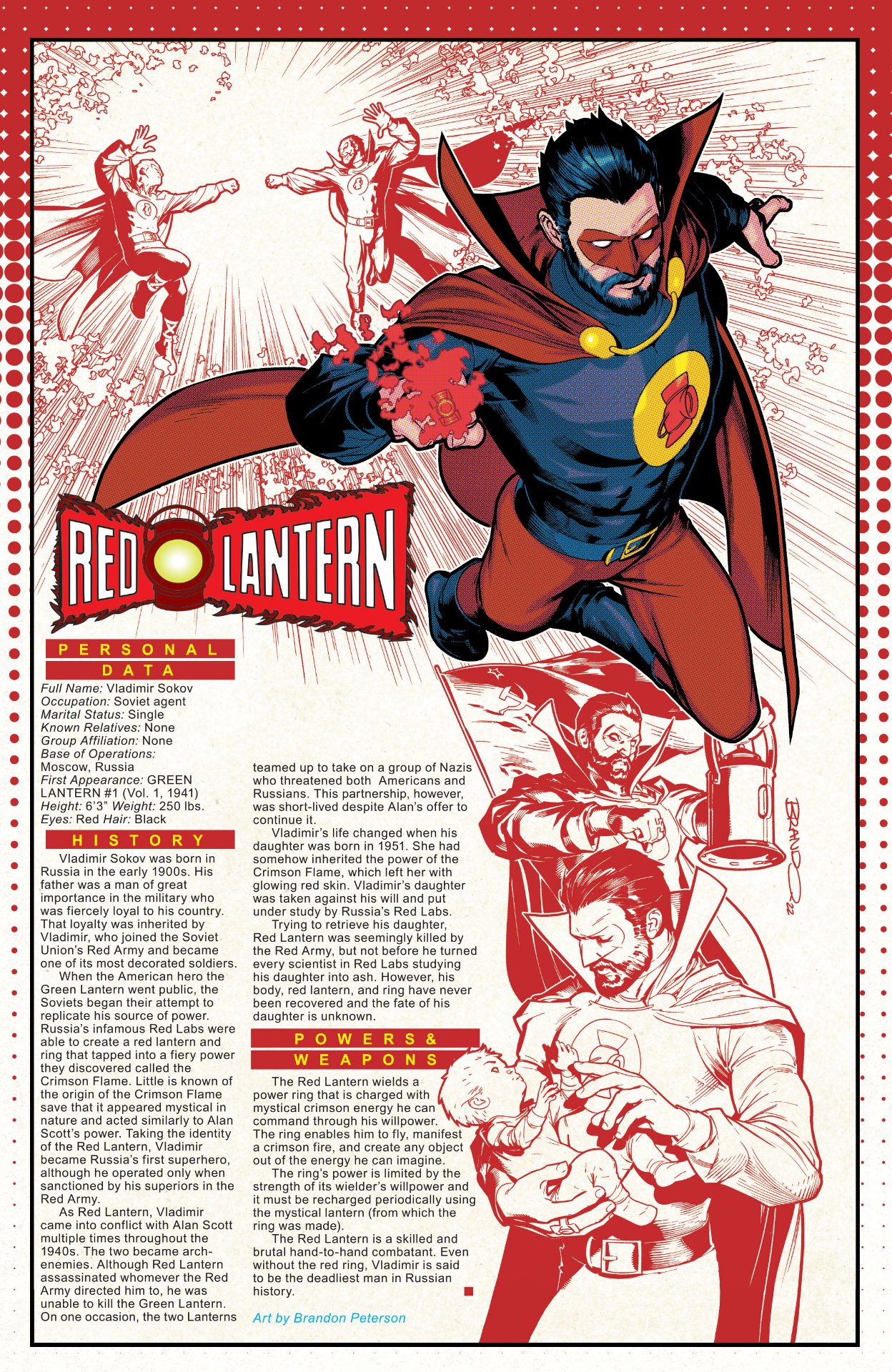
What we thought: Like Mister Miracle, there is no Golden Age Red Lantern. But there is a Golden Age Green Lantern, the original hero to use the name, Alan Scott.
Alan Scott didn't originally have any connection to the modern Green Lantern or the concept of the "emotional spectrum," but given the modern lore around the concept of the Green Lanterns and their multicolored counterparts, the invention of a Golden Age Red Lantern makes sense as a retcon.
Who he is: The Golden Age Red Lantern is actually seemingly connected to a classic Golden Age Wonder Woman villain named Zara who was the leader of a group known as the Cult of the Crimson Flame. Per his Who's Who entry, the Golden Age Red Lantern is the first Russian superhero, who wields a power known as the Crimson Flame which was harnessed by Soviet scientists in response to the rise of the original Green Lantern.
Whether there's any connection to Zara of the Crimson Flame and the power wielded by the Golden Age Red Lantern is unknown, but we can't imagine the use of the term 'Crimson Flame' is coincidental - especially considering it dates back to the actual Golden Age of comics.
Betsy Ross
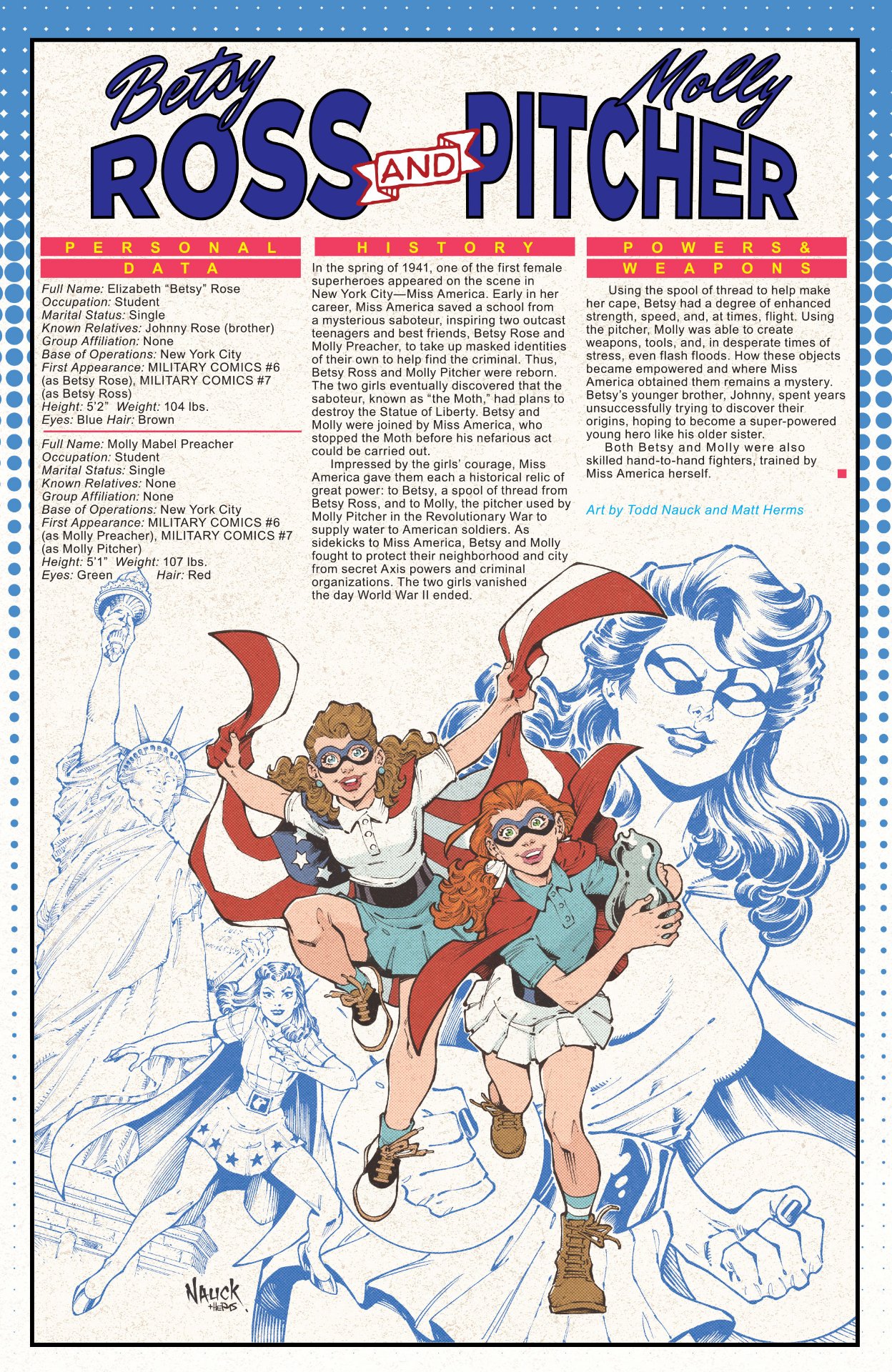
What we thought: There's not a classic DC hero by the name of Betsy Ross (which is, of course, the name of the woman credited with sewing the original version of the American Flag in the 18th century). But oddly enough, there is a Betsy Ross in Marvel Comics.
The Marvel version of Betsy Ross actually does date back to the Golden Age. She was the original love interest of Captain America, who later became the hero known as Golden Girl. But we're guessing there's no connection to the new DC character.
Who she is: The Golden Age DC version of Betsy Ross is one of two teen girls (along with Molly Pitcher, more on her in a moment) who share their names with heroes from the folklore of the American Revolution.
They became teen heroes after teaming up with the Golden Age DC hero Miss America (no relation to the Golden Age Marvel character, of course) to stop a saboteur in WWII. However, both Betsy Ross and Molly Pitcher abruptly vanished at the end of the war.
Molly Pitcher
What we thought: Like Betsy Ross, Molly Pitcher is a name taken from American history as the nickname of a woman who supposedly fought in the American Revolutionary War.
DC has never had a hero named Molly Pitcher before, but weirdly enough, 1957's Wonder Woman #87 contains a prose essay about the historical Molly Pitcher.
Who she is: Along with Betsy Ross, Molly Pitcher is one of the two teen sidekicks of existing Golden Age DC hero Miss America (again, no relation to the Marvel hero of the same name).
Like Betsy, Molly vanished at the end of WWII, with fellow teen hero Quiz Kid (more on him coming up) later vanishing himself while investigating their abrupt disappearances.
Ladybug
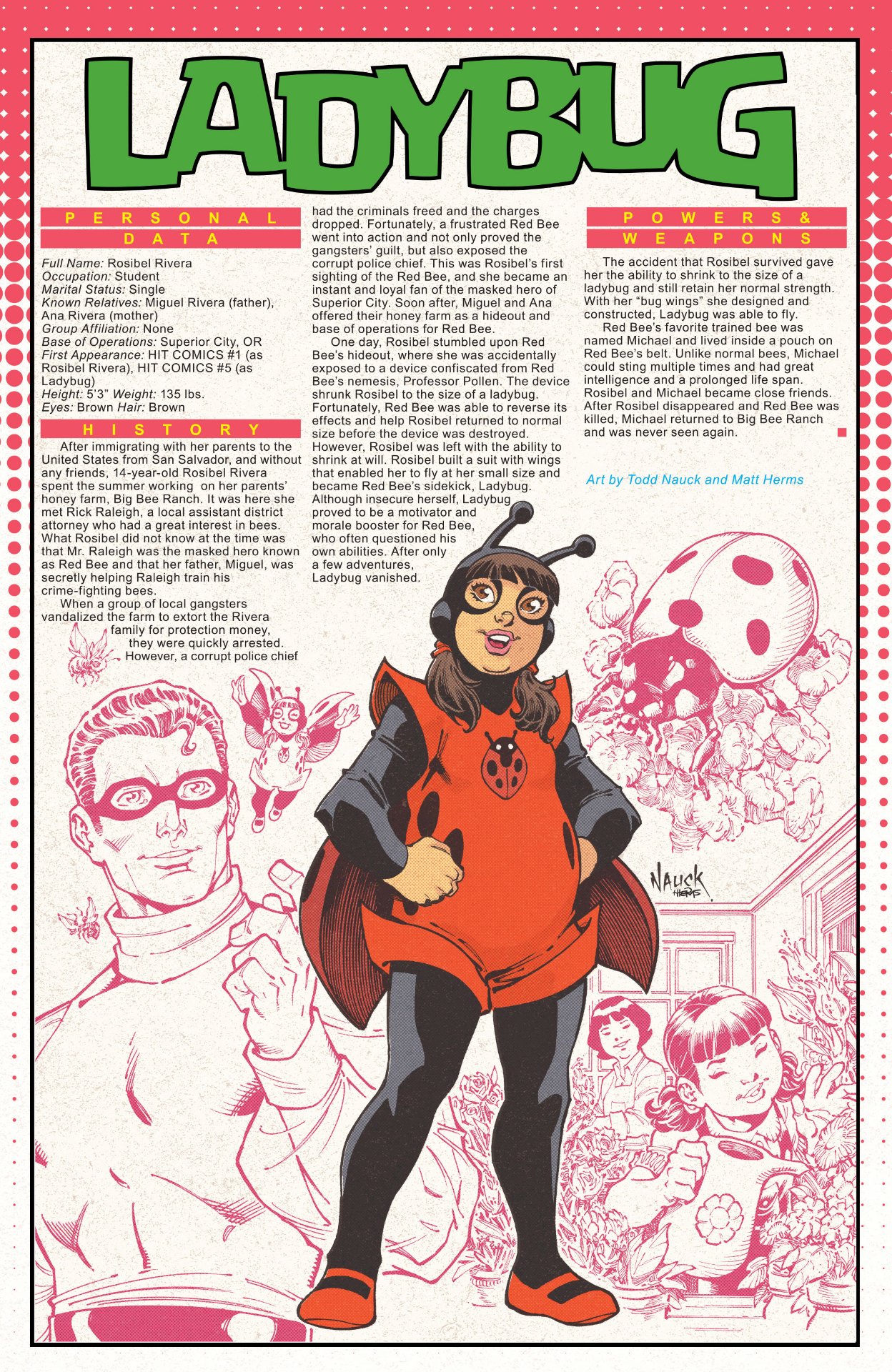
What we thought: DC has a whole Multiverse of realities, and one of them, Earth-8, is home to a group known as the Retaliators who are in fact parodies of the Avengers - including Ladybug, based on Spider-Woman.
There's also of course the cartoon superhero Ladybug, star of the animated series Miraculous, but we're gonna go out on a limb and guess DC's new Ladybug will have nothing to do with that.
Who she is: Ladybug is a new teen hero with a connection to a Golden Age hero who is, let's just say, the deepest of deep cuts: the Red Bee. And like the Red Bee, Ladybug has the power to shrink herself - though she "vanished" after just a few adventures with her mentor.
Weirdly, the Red Bee actually had another sidekick who is well established in continuity: a trained, super-intelligent bee named Michael who lived in a pouch on his belt. According to her Who's Who entry, Ladybug and Michael were "close friends" before her disappearance.
Salem, the Witch Girl
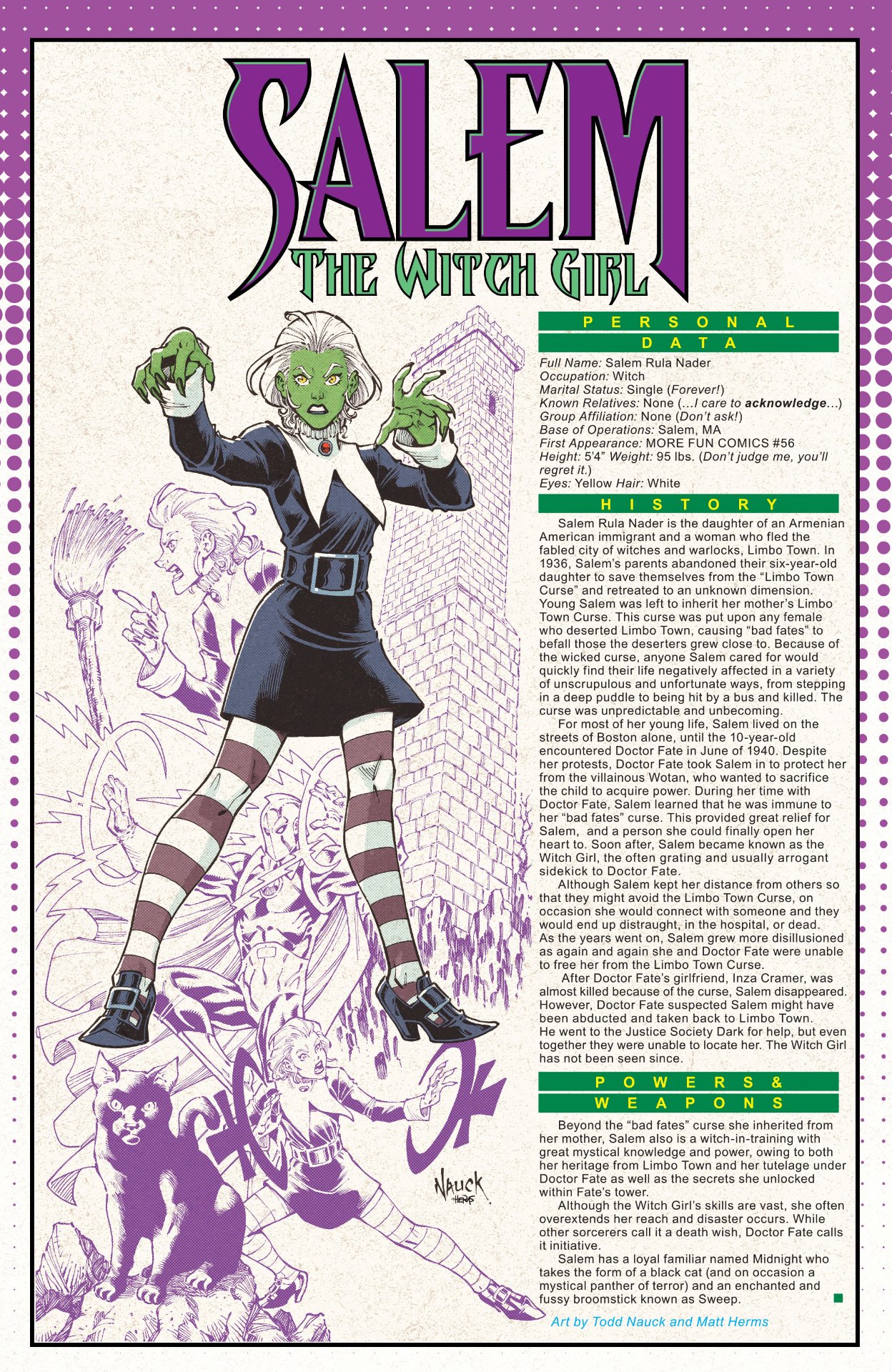
What we thought: The apparent DC connection for the newly created Salem, the Witch Girl is Jack Kirby's '70s character Klarion, the Witch Boy.
Originally introduced as the enemy of Etrigan the Demon, Klarion the Witch Boy is a juvenile sorcerer from the extra-dimensional realm of Witch World.
Who she is: Salem the Witch Girl is a young Armenian American immigrant who is lost in the Witch Dimension as a child (the same place Klarion the Witch Boy hails from), drawing the attention of the Golden Age Doctor Fate's enemy Wotan.
Because of her connection to a cursed place called Limbo Town, Salem the Witch Girl may be responsible for several misfortunes that befell her mentor, Doctor Fate - though she disappeared before those questions could be fully answered.
John Henry, Jr.
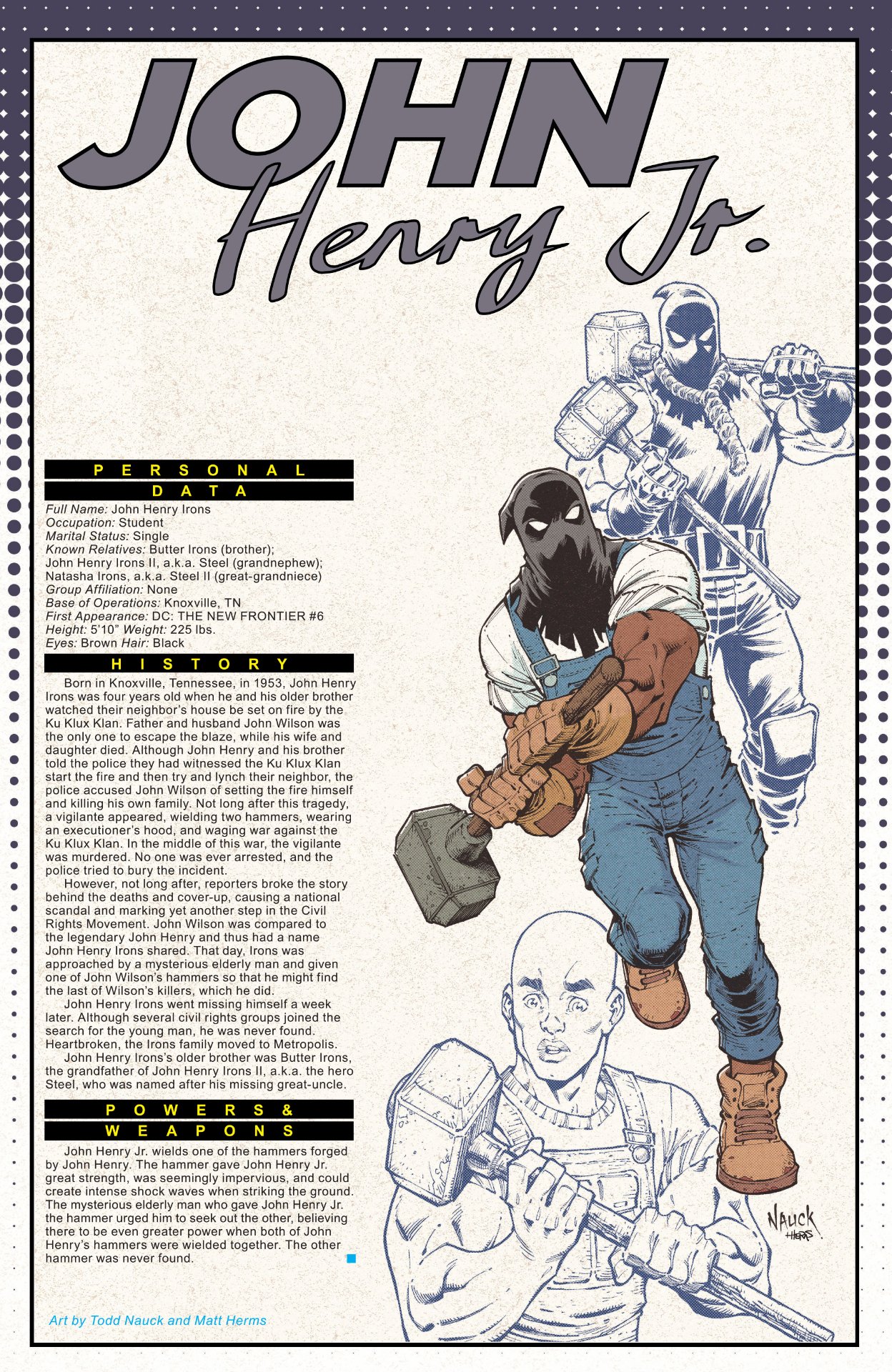
What we thought: Fans of Superman will likely immediately be reminded of the hero Steel AKA John Henry Irons, but there may be a different DC legacy for John Henry, Jr.
In Darwyn Cooke's mid-'00s limited series New Frontier, a retelling of the origins of DC's Silver Age, there's a hero named John Henry who is retconned into DC history, but who hasn't appeared elsewhere. Could there be a connection between that character and John Henry Jr?
Who he is: John Henry, Jr. is apparently exactly who we thought - a version of the hero who was introduced in Darwyn Cooke's New Frontier. However, he comes with a few added twists.
In this case, he wields a magic hammer said to be forged by the John Henry of folklore, which gives him super strength and invulnerability. And his secret identity is actually John Henry Irons - the same as the modern hero Steel - and that's not a coincidence, as his Who's Who entry establishes that he's the great uncle of his namesake Metropolis hero.
The Harlequin's Son
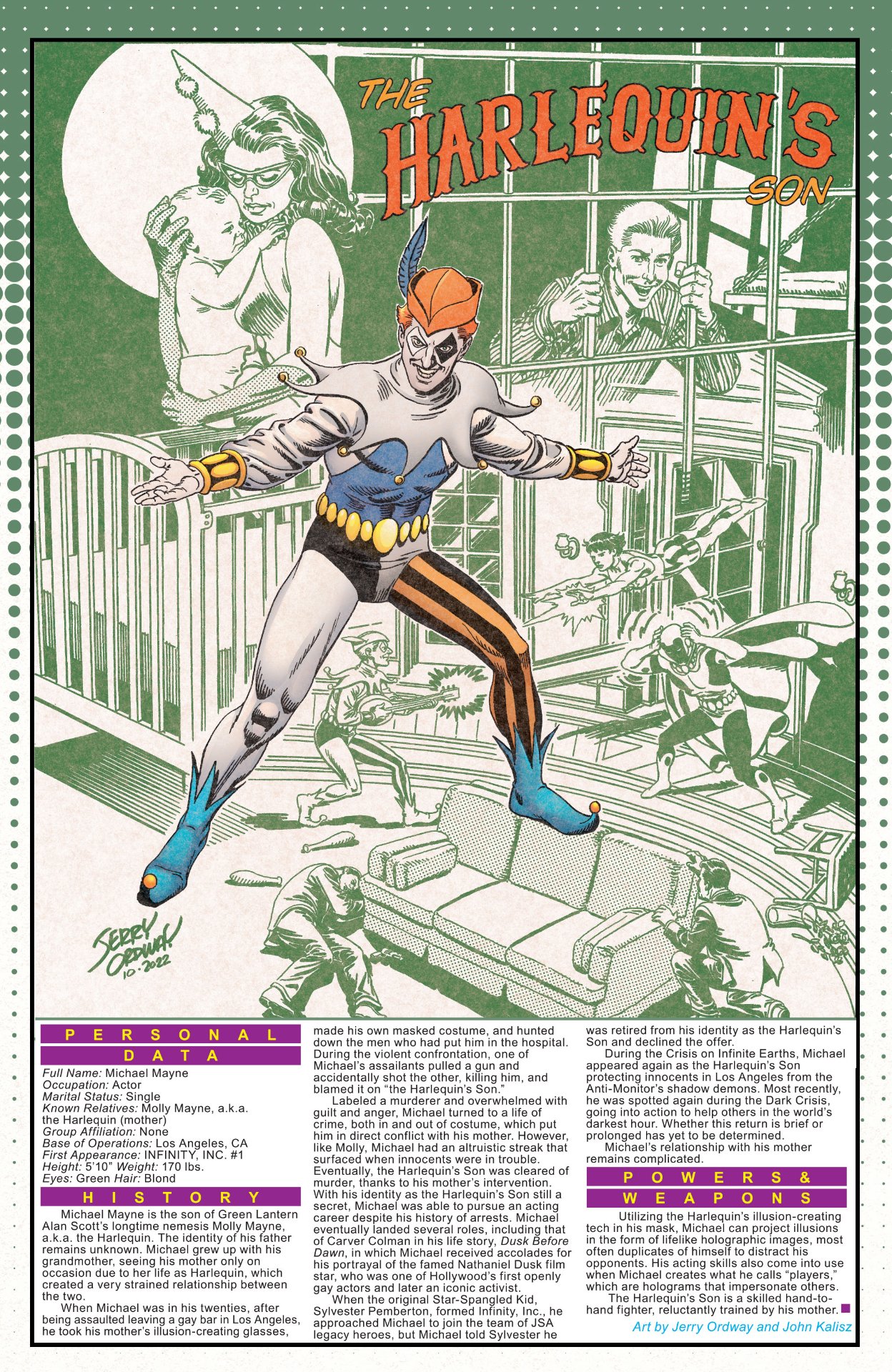
What we thought: No, not Harley Quinn - Harlequin. The original Golden Age Harlequin was a clown-themed villain who fought the Golden Age Green Lantern, Alan Scott, while the second was a member of the Teen Titans in the '70s.
Interestingly enough, the name "The Harlequin's Son" seems to be a reference to the second Harlequin's original codename, the Joker's Daughter.
Who he is: Again, we pretty much nailed it. Harlequin's Son is, well, the son of the Golden Age Green Lantern villain the Harlequin - though the identity of his father remains a mystery.
According to his Who's Who entry, Harlequin's Son eventually reformed as a hero and even had a day job as a well-regarded actor in his secret identity. He was even offered JSA membership but turned it down as he had already retired from being Harlequin's Son when the offer came.
Judy Garrick - The Boom
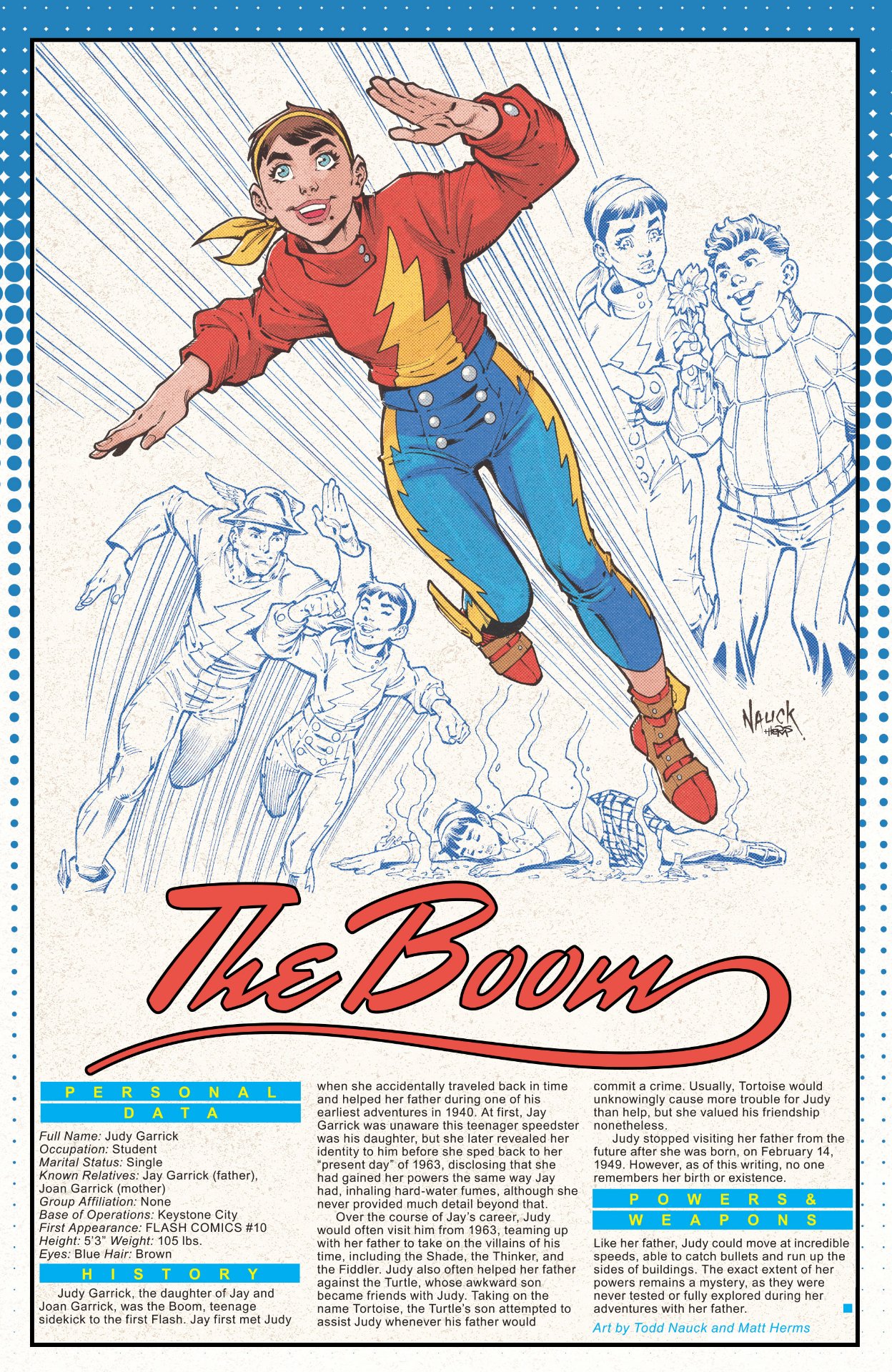
What we thought: Judy Garrick has been introduced in DC before Flashpoint Beyond #6, as the apparent daughter of Jay Garrick, the Golden Age Flash.
Judy is a modern character retconned into the current DC Universe, though Jay's wife, Joan Garrick, has appeared numerous times over the decades.
What she is: This one wasn't exactly a mystery, so it's also not really a surprise that this Judy Garrick is, in fact, the same daughter of Jay and Joan Garrick who was previously mentioned in other stories. But the surprise is that Judy was also a super-speedster who went by the name The Boom.
A teenager in the '60s, Judy became her father, the original Flash's sidekick when she traveled back in time to the '40s. However, according to her Who's Who entry, she eventually stopped traveling back in time, and all records of her were lost - including Jay and Joan's memories of her birth.
The Golden Age Legionnaire

What we thought: There's no actual Golden Age hero named Legionnaire - but as many fans will immediately recognize, the name does have a DC pedigree.
Members of the 31st-century superhero team the Legion of Super-Heroes are known as Legionnaires - so this character could be DC making use of the term, or they could have a connection to the Legion in some way.
Who they are: The Golden Age Legionnaire is actually still mostly unknown. Their Who's Who entry is almost entirely redacted, aside from revealing the character's Legion of Super-Heroes flight ring, with even the image of the character blacked out aside from that one detail.
If we had to take a total guess, we're gonna say this could be a version of Superboy - perhaps even Clark Kent himself - who has a long history with the Legion and would certainly warrant the spoiler treatment.
Cherry Bomb
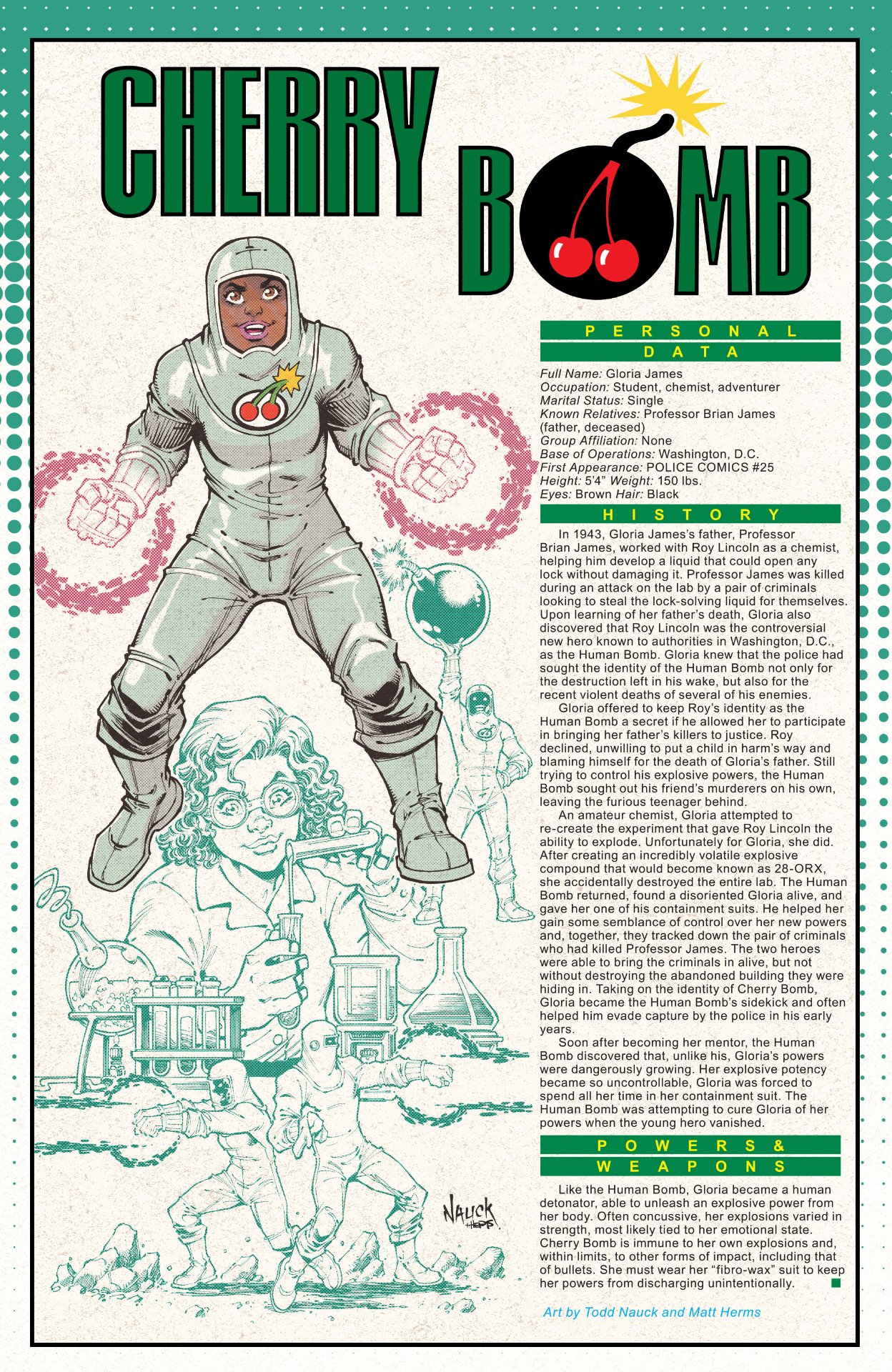
What we thought: Speaking of the Legion, not everyone who tries out for the team is accepted. And some of those who don't make the cut wind up holding a grudge against the venerable superhero team.
Case in point, Cherry Bomb, one of four Legion rejects who teamed up to fight the team. Whether the character introduced here will have any connection to the Legion version, we'll have to wait and see.
Who she is: In the case of Cherry Bomb, despite the same codename, the Golden Age Cherry Bomb has nothing to do with the Legion of Super-Heroes. But she does have a connection to another Golden Age hero: the Human Bomb.
Cherry Bomb is a teen girl who has all the same powers as the original Human Bomb, meaning she can literally explode - though she has to wear a special suit to keep from causing uncontrollable blasts. She also got her powers from the same experimental formula as the Human Bomb, as her father was a scientist who worked alongside him.
Quiz Kid
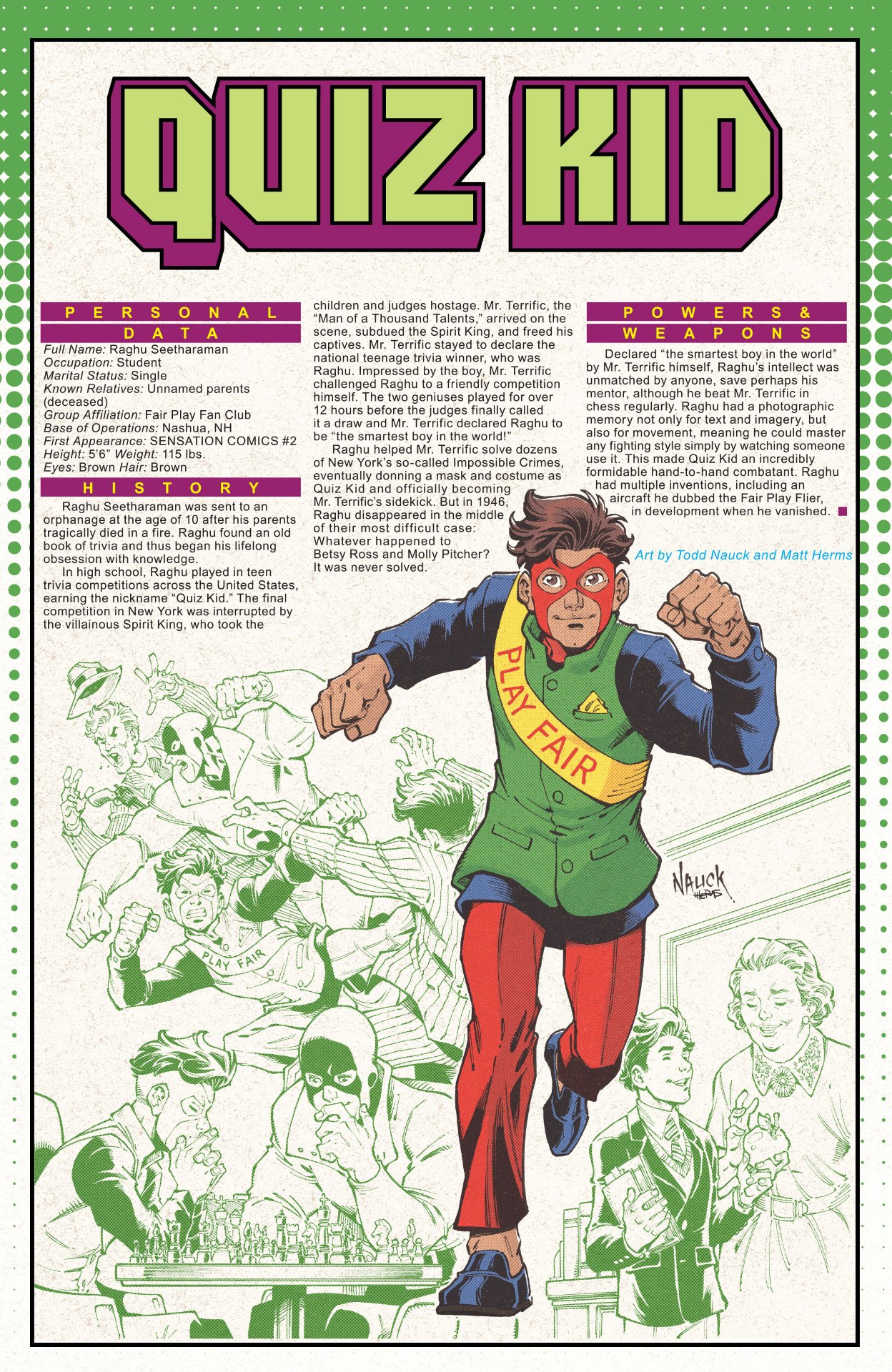
What we thought: There's no prior mainstream DC character named Quiz Kid. But the one introduced in Flashpoint Beyond #6 could be an adaptation of the character Kwiz Kid, a villain who has appeared in comics based on the animated Teen Titans Go! Continuity.
There's also the possibility that he's somehow related to Golden Age villain Brain Wave or his son, the hero known as Brainwave Jr.
Who he is: This is another case where the apparent possible connections to DC lore for Quiz Kid are misleading, as he's actually a long-lost sidekick for the original Golden Age Mister Terrific, whose gimmick is that he's the so-called "Smartest Boy in the World," so-named by Mister Terrific himself.
But his history stops abruptly in the '40s, as Quiz Kid disappeared while trying to solve the disappearance of his fellow retconned Golden Age heroes, Molly Pitcher and Betsy Ross.
The Golden Age Aquaman
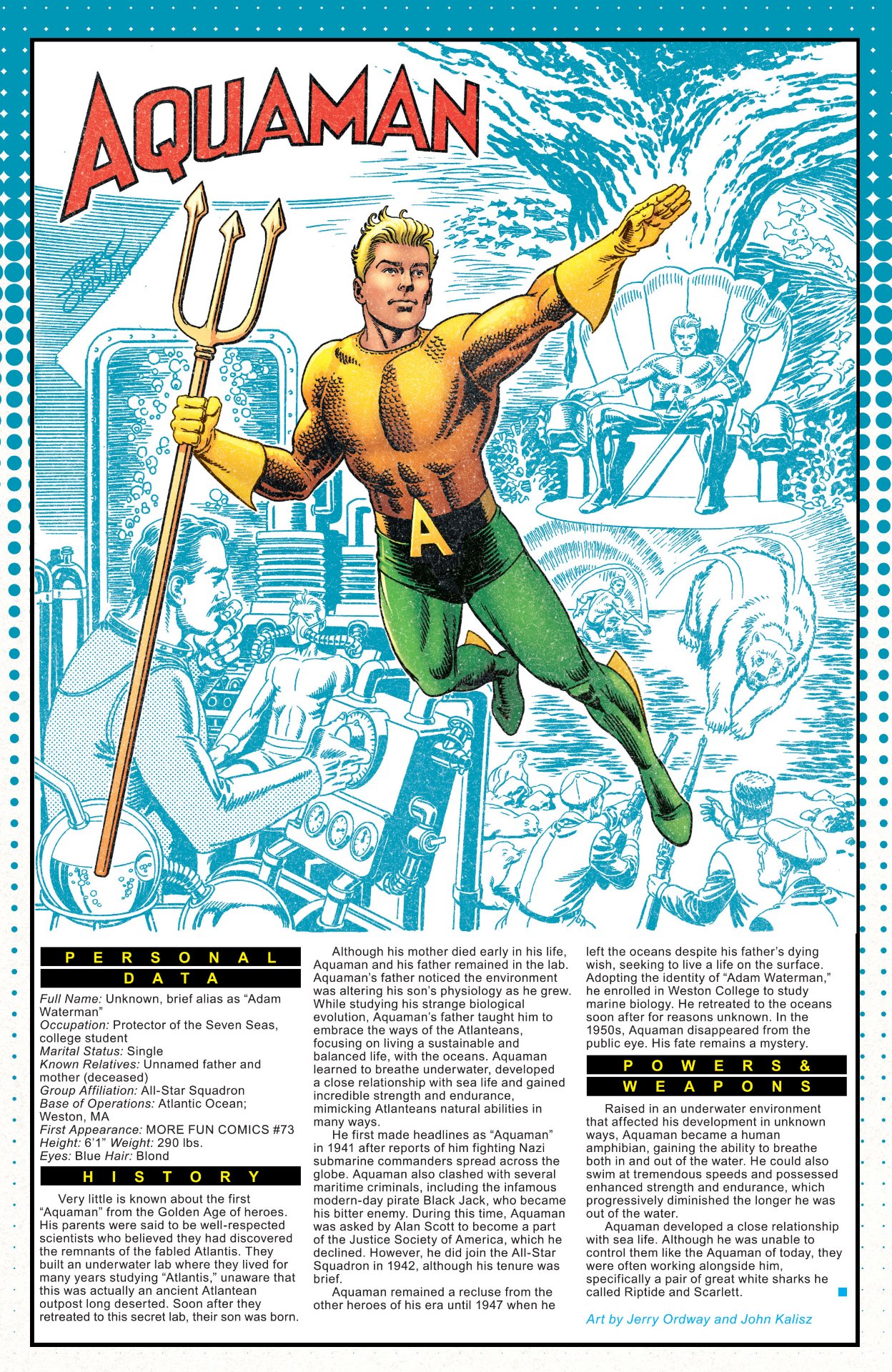
What we thought: The original Aquaman, Arthur Curry, debuted back in the Golden Age in 1941, and when his JSA counterparts were revived on Earth-Two in the '60s, the Golden Age Aquaman came along with them (you can tell him apart from Earth-One Aquaman because he has yellow gloves).
But the implication here seems to be the introduction of an Aquaman to predate Arthur Curry in continuity, or perhaps another alt-version of Arthur Curry himself.
Who he is: Welp, he's the Golden Age Aquaman - yellow gloves and all. But he's been given a new origin to separate him from Arthur Curry, the (until now) original Aquaman. And along with taking Arthur Curry's status as the original in-continuity Aquaman, the new Golden Age Aquaman is seemingly being inserted as the version of the character who famously hurled a bear and performed several other weird but well-known feats, judging by the art on his Who's Who entry.
The new Golden Age Aquaman is the unnamed son of two scientists who birthed and raised their son in a lab near the sunken city of Atlantis, which altered his physiology. He later retired in 1947, taking up the apparent civilian pseudonym "Adam Waterman."
Learn the history of DC's Golden Age hero team the Justice Society, the first superhero team in comics.

No comments